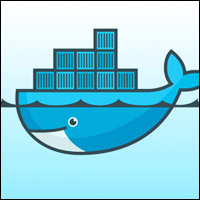Hybrid cloud technology is garnering much attention lately, whether for cutting-edge development and the continuous integration and release processes achieved through DevOps or for traditional enterprise-proven approaches to infrastructure and applications.
There’s more to hybrid clouds than hype. The ability to effectively and efficiently manage different infrastructures and applications across a range of cloud computing environments allows organizations to align their many applications, initiatives and units with whichever cloud environments — public or private — make the most sense.
The Outlook Is Clear
The growth outlook for cloud computing — including public, private and hybrid deployments — is strong, according to data from ChangeWave, a service of 451 Research. Of more than 1,100 respondents involved in IT buying decisions surveyed in April 2013, 40 percent reported that their organization used public cloud services — up 11 percent from a year earlier.
Among companies currently using public clouds 40 percent planned to increase their spending over the next six months, the ChangeWave survey found. Eight percent of companies surveyed reported using hybrid cloud deployments — unchanged from January. Eleven percent of companies said they would be using a hybrid cloud deployment within the next six months.
The term “hybrid cloud” describes a combination of two or more clouds, including public and private, that interact to create a unified but flexible infrastructure. While those who use the term “hybrid” may not mention it specifically, hybrid is also about supporting multiple hypervisors, multiple operating systems, and perhaps traditional data center resources.
The hybrid cloud movement is similar to the trend of polyglot programming, which involves the use of many different languages, frameworks, services, databases, and other pieces, including different infrastructures, for application development and deployment.
The hybrid cloud market may be unfolding similarly to the path operating systems, and vendors took four to five years ago. Microsoft and Red Hat, for example, were pressured to support one another’s hypervisors and OS technology despite fighting aggressively against one another in the market.
Today, one of the first and most important questions for many large enterprise and service provider customers contemplating cloud deployments centers on how well cloud providers are able to support rival clouds and technologies.
This is one reason openness, including open-source software and open standards, is a critical part of hybrid cloud computing. The continued pervasiveness and significance of open technology in cloud computing makes sense, considering that open source and openness, in general, have been fundamental to cloud computing from the start.
Evolution of IT Openness
The ongoing interest in hybrid cloud computing and the traction it has gained reflect the industry’s position regarding the five pillars of modern IT openness: open-source software, open standards, open APIs, open clouds, and open data.
Open source continues to be an integral part of most if not all, cloud computing infrastructure and application support. Although not all clouds are open source, they all rely significantly on open-source projects, communities, and integrations.
Open standards continue to evolve — from open mostly in name to more meaningful openness and collaboration. For example, several large users cited the use of and adherence to open standards as a contributing factor in their selection of OpenStack software in recent research on the OpenStack cloud project.
Open APIs also continue to play a significant role in the latest application development, deployment, and support strategies, particularly given the consolidation in the space: Intel-Mashery, CA-Layer7, and MuleSoft-Programmable Web, for example.
Open clouds are proving to be a viable option to more proprietary alternatives, though rivals — open or not — are competing partly on how well they can support one another’s technologies. Open data remains a much-discussed and debated issue, and this element of modern IT openness is still evolving, but it may have just gotten a boost from Washington as an executive order from President Obama opens more federal data to researchers and entrepreneurs in an effort to spur innovation.
As the name implies, “hybrid” is all about bringing together different attributes and combining them. Openness enables vendors and technologies to find common ground and innovate from there, so it is essential to enable hybrid computing and hybrid clouds. Given the array of technologies that are now a part of the development, deployment, and support of applications, as well as the trend of polyglot programming, it’s no wonder “hybrid cloud” has emerged as a key buzzword and become a focus for so many users and providers.



















































